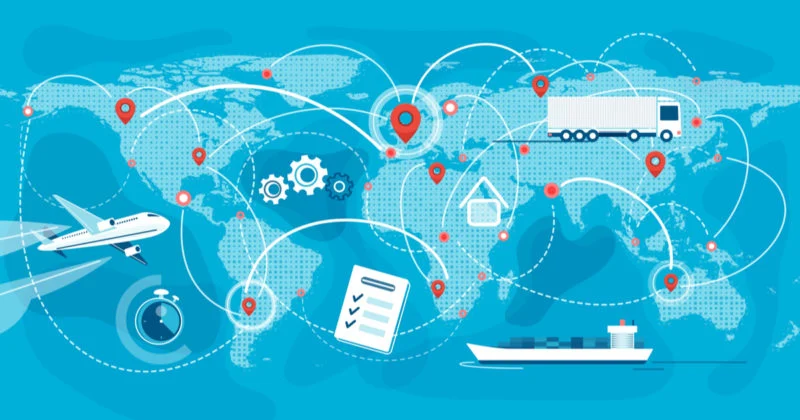The COVID-19 pandemic struck out of the blue, affecting industries, economies, and lives, on an unprecedented scale. Among the many sectors that took a hit, the global supply chain was significantly impacted.
The initial outbreak of the virus in China, the world’s largest manufacturing hub, caused a ripple effect on the supply chains worldwide. Factories were forced to shutter, and transportation was severely limited to prevent the spread of the virus, leaving industries gasping for components and finished goods.
Certain industries, such as life sciences, experienced positive effects during the pandemic due to increased customer demand and the development of essential products like COVID-19 tests or vaccines. On the other hand, industries like automotive and industrial products were hit hard by negative effects.
Countries worldwide faced prolonged lockdowns, which led to a reduced workforce across all sectors, including shipping and logistics. This situation resulted in a sharp decline in cargo movement, heavily impacting the global supply chain. Industries such as automobiles, electronics, and pharmaceuticals that relied on “just-in-time” production methods had to halt production due to a lack of inventory.
Furthermore, consumer behavior also dictated the interactions within the supply chain. Panic buying and stockpiling of essential goods during the initial phases led to a temporary shortage of products like toilet paper, hand sanitizers, face masks, and certain food items, highlighting the inflexibility of our supply chain to sudden demand surges.
Despite economic uncertainties, most companies did not halt their technology investments during the pandemic, indicating the value of a digital supply chain in navigating disruptive forces and responding to supply and demand volatility.
However, we have seen remarkable resilience in overcoming these challenges and a gradual recovery of the supply chain. Companies have been exploring a diversified supply chain model to avoid over-dependence on a single region. We have seen businesses reconfiguring their supply chains, seeking to move production closer to their markets, thus encouraging local production and decreasing dependency on international supply chains.
Digital transformation has been another key recovery driver. Businesses have started investing heavily in technology to create transparency, agility, and flexibility in their supply chain operations. The implementation of artificial intelligence, machine learning, and IoT(Internet of Things-the comprehensive grid of interlinked devices, along with the technology that enables their interaction with the cloud and each other) enables the real-time tracking of goods, the prediction of disruptions, and the automation of processes, providing a robust countermeasure against unforeseen interruptions.
Last but not least, the pandemic sparked a review of what constitutes “essential goods,” promoting local production and self-sustainability, especially in areas like pharmaceuticals and food production.
As we continue into 2023, with industries still grappling to attain pre-COVID efficiency, the recovery of the global supply chain seems to be a gradual but promising process. The pandemic-induced changes are not just about recovery; they provide a blueprint for a more robust, inclusive, and resilient supply chain model for potential crises in the future.
We continue to navigate through these remarkable times, learning and adapting at every step, hoping for a more resilient and efficient global supply chain model in post-pandemic times.








+ There are no comments
Add yours